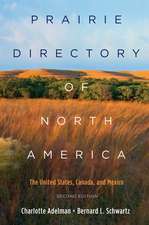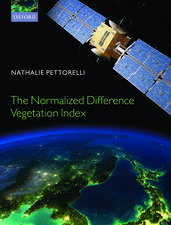The Landscape Ecology of Fire: Ecological Studies, cartea 213
Editat de Donald McKenzie, Carol Miller, Donald A. Falken Limba Engleză Paperback – 27 feb 2013
| Toate formatele și edițiile | Preț | Express |
|---|---|---|
| Paperback (1) | 945.79 lei 43-57 zile | |
| SPRINGER NETHERLANDS – 27 feb 2013 | 945.79 lei 43-57 zile | |
| Hardback (1) | 951.29 lei 43-57 zile | |
| SPRINGER NETHERLANDS – 6 ian 2011 | 951.29 lei 43-57 zile |
Din seria Ecological Studies
- 18%
 Preț: 1118.93 lei
Preț: 1118.93 lei -
 Preț: 553.71 lei
Preț: 553.71 lei - 18%
 Preț: 1680.55 lei
Preț: 1680.55 lei - 18%
 Preț: 1003.38 lei
Preț: 1003.38 lei - 20%
 Preț: 1004.69 lei
Preț: 1004.69 lei -
 Preț: 480.62 lei
Preț: 480.62 lei - 5%
 Preț: 752.26 lei
Preț: 752.26 lei - 15%
 Preț: 643.99 lei
Preț: 643.99 lei - 15%
 Preț: 644.18 lei
Preț: 644.18 lei - 15%
 Preț: 652.49 lei
Preț: 652.49 lei - 18%
 Preț: 789.83 lei
Preț: 789.83 lei -
 Preț: 382.36 lei
Preț: 382.36 lei - 15%
 Preț: 643.48 lei
Preț: 643.48 lei - 15%
 Preț: 646.30 lei
Preț: 646.30 lei - 15%
 Preț: 634.32 lei
Preț: 634.32 lei -
 Preț: 384.86 lei
Preț: 384.86 lei - 18%
 Preț: 789.98 lei
Preț: 789.98 lei - 15%
 Preț: 645.14 lei
Preț: 645.14 lei - 15%
 Preț: 649.39 lei
Preț: 649.39 lei - 18%
 Preț: 1005.43 lei
Preț: 1005.43 lei - 18%
 Preț: 949.23 lei
Preț: 949.23 lei - 15%
 Preț: 649.54 lei
Preț: 649.54 lei - 15%
 Preț: 643.34 lei
Preț: 643.34 lei - 15%
 Preț: 649.71 lei
Preț: 649.71 lei - 15%
 Preț: 638.76 lei
Preț: 638.76 lei - 18%
 Preț: 957.62 lei
Preț: 957.62 lei - 18%
 Preț: 1235.25 lei
Preț: 1235.25 lei - 18%
 Preț: 962.18 lei
Preț: 962.18 lei - 18%
 Preț: 949.23 lei
Preț: 949.23 lei - 15%
 Preț: 660.68 lei
Preț: 660.68 lei -
 Preț: 397.76 lei
Preț: 397.76 lei - 15%
 Preț: 638.24 lei
Preț: 638.24 lei - 18%
 Preț: 942.31 lei
Preț: 942.31 lei - 18%
 Preț: 1232.57 lei
Preț: 1232.57 lei - 15%
 Preț: 651.34 lei
Preț: 651.34 lei - 18%
 Preț: 952.72 lei
Preț: 952.72 lei - 18%
 Preț: 1834.27 lei
Preț: 1834.27 lei - 18%
 Preț: 1229.10 lei
Preț: 1229.10 lei -
 Preț: 423.95 lei
Preț: 423.95 lei - 18%
 Preț: 948.92 lei
Preț: 948.92 lei
Preț: 945.79 lei
Preț vechi: 1153.39 lei
-18% Nou
Puncte Express: 1419
Preț estimativ în valută:
180.98€ • 189.43$ • 150.63£
180.98€ • 189.43$ • 150.63£
Carte tipărită la comandă
Livrare economică 31 martie-14 aprilie
Preluare comenzi: 021 569.72.76
Specificații
ISBN-13: 9789400734814
ISBN-10: 9400734816
Pagini: 332
Ilustrații: XX, 312 p.
Dimensiuni: 155 x 235 x 17 mm
Greutate: 0.45 kg
Ediția:2011
Editura: SPRINGER NETHERLANDS
Colecția Springer
Seria Ecological Studies
Locul publicării:Dordrecht, Netherlands
ISBN-10: 9400734816
Pagini: 332
Ilustrații: XX, 312 p.
Dimensiuni: 155 x 235 x 17 mm
Greutate: 0.45 kg
Ediția:2011
Editura: SPRINGER NETHERLANDS
Colecția Springer
Seria Ecological Studies
Locul publicării:Dordrecht, Netherlands
Public țintă
ResearchCuprins
PART I: CONCEPTS AND THEORY.- PART II: CLIMATE CONTEXT.- PART III: LANDSCAPE FIRE DYNAMICS AND INTERACTIONS.- PART IV: LANDSCAPE FIRE MANAGEMENT, POLICY, AND RESEARCH IN AN ERA OF GLOBAL CHANGE.
Recenzii
From the reviews:
“This work represents the state of the art in North American landscape fire ecology. Integrating geospatial technologies with landscape ecology, the book presents the advanced student, practitioner, or researcher of fire management, landscape ecology, and climate change with conceptual frameworks, theory, and examples of data-driven analyses in multiple regions. … Valuable as a reference for land managers of fire-dependent ecosystems, and as a point of departure for graduate research. Summing Up: Highly recommended. Upper-division undergraduate through professional readership.” (E. J. Delaney, Choice, Vol. 48 (11), August, 2011)
“This volume addresses several emerging ideas regarding the landscape ecology of fire, consisting of 12 collected chapters. … it aims to advance certain emerging subfields and theories that are less covered in other publications. In this way much of the work is quite interesting and useful … . this volume complements other fireecology works well and ultimately achieves its objective of advancing thought on some promising new landscape disturbance theories and key contemporary topics.” (Daniel C. Donato, The Quarterly Review of Biology, Vol. 88 (1), March, 2013)
“This work represents the state of the art in North American landscape fire ecology. Integrating geospatial technologies with landscape ecology, the book presents the advanced student, practitioner, or researcher of fire management, landscape ecology, and climate change with conceptual frameworks, theory, and examples of data-driven analyses in multiple regions. … Valuable as a reference for land managers of fire-dependent ecosystems, and as a point of departure for graduate research. Summing Up: Highly recommended. Upper-division undergraduate through professional readership.” (E. J. Delaney, Choice, Vol. 48 (11), August, 2011)
“This volume addresses several emerging ideas regarding the landscape ecology of fire, consisting of 12 collected chapters. … it aims to advance certain emerging subfields and theories that are less covered in other publications. In this way much of the work is quite interesting and useful … . this volume complements other fireecology works well and ultimately achieves its objective of advancing thought on some promising new landscape disturbance theories and key contemporary topics.” (Daniel C. Donato, The Quarterly Review of Biology, Vol. 88 (1), March, 2013)
Textul de pe ultima copertă
Global warming is expected to change fire regimes, likely increasing the severity and extent of wildfires in many ecosystems around the world. What will be the landscape-scale effects of these altered fire regimes? Within what theoretical contexts can we accurately assess these effects? We explore the possible effects of altered fire regimes on landscape patch dynamics, dominant species (tree, shrub, or herbaceous) and succession, sensitive and invasive plant and animal species and communities, and ecosystem function. Ultimately, we must consider the human dimension: what are the policy and management implications of increased fire disturbance, and what are the implications for human communities?
Caracteristici
Features new theoretical ideas, new syntheses, and a broad sampling of field landscape ecology Focus on applications of theoretical concepts in landscape and fire ecology Covering policy and management implications of increased fire disturbance Includes supplementary material: sn.pub/extras











